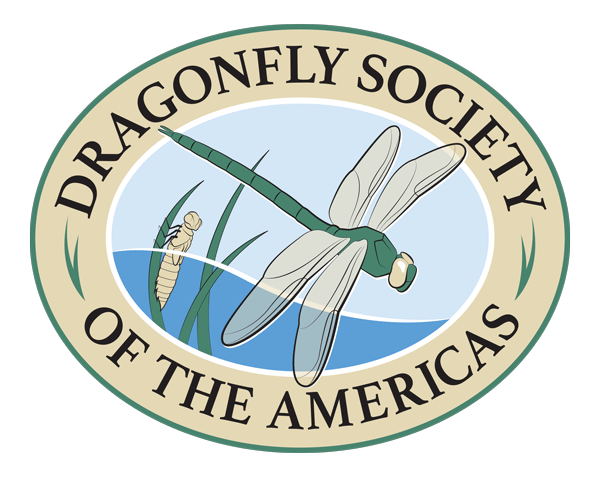October DSA Species of the Month: Striped Meadowhawk (Sympetrum pallipes)
Striped Meadowhawk (Sympetrum pallipes), Cranberry Beach Road, Grayland, Washington; 9-6-24 (Photo copyright Dennis Paulson)
DSA Species of the Month for October 2024
October’s DSA species focus is the Striped Meadowhawk (Sympetrum pallipes), a common and widespread species in western North America. Averaging 36 mm (1.4 inches) in length, males are red and females brown or red like most meadowhawk species, but both sexes can be recognized by their prominent pale thoracic stripes. Follow odonate expert Dennis Paulson as he recounts his surprising encounter this autumn with these fascinating dragonflies.
Look and Ye Shall Find
Sometimes, you are fortunate when looking for odonates. This was the case in September, when my wife, Netta Smith, and I found these Striped Meadowhawks (Sympetrum pallipes).
Striped Meadowhawks (Sympetrum pallipes), Cranberry Beach Road, Grayland, Washington; 9-6-24 (Photo copyright Dennis Paulson)
The species name pallipes (pale-footed) is appropriate over much of the range, but not the wet Pacific Northwest, where the legs are black. Emerging in June and July, they fly as late as November in many areas. But they are locally distributed because of their habitat needs.
Striped Meadowhawks (Sympetrum pallipes), Cranberry Beach Road, Grayland, Washington; 9-6-24 (Photo copyright Dennis Paulson)
They are among the relatively few species of Odonata that breed in seasonal wetlands--they lay their eggs on land!
Striped Meadowhawks (Sympetrum pallipes), Cranberry Beach Road, Grayland, Washington; 9-6-24 (Photo copyright Dennis Paulson)
Striped Meadowhawks (Sympetrum pallipes), Cranberry Beach Road, Grayland, Washington; 9-6-24 (Photo copyright Dennis Paulson)
They breed in fall, when shallow ponds have dried up, and while in flight drop their eggs one by one into the herbaceous vegetation filling the dry basin. You can see their tiny white eggs being dropped in some of the following photos.
Striped Meadowhawks (Sympetrum pallipes), Cranberry Beach Road, Grayland, Washington; 9-6-24 (Photo copyright Dennis Paulson)
Striped Meadowhawks (Sympetrum pallipes), Cranberry Beach Road, Grayland, Washington; 9-6-24 (Photo copyright Dennis Paulson)
Striped Meadowhawks (Sympetrum pallipes), Cranberry Beach Road, Grayland, Washington; 9-6-24 (Photo copyright Dennis Paulson)
The eggs are dormant until spring, well after the pond has filled during winter rains. They then hatch and the nymphs grow rapidly to full size. The adults emerge from the water in early summer. As soon as they mature sexually, they return to the now dry ponds and mate and oviposit.
Just by luck on September 6, 2024, we found one of these dried-up but heavily vegetated pond basins at the edge of Cranberry Beach Road in Grayland, Washington. As one drives out this road, heavy low forest gives way to sand plains covered with herbaceous vegetation well back from the ocean beach. Parallel to the beach, there are depressions deep enough to hold water for part of the year. And there were the meadowhawks! I took more than 200 photos in 10 minutes at midday.
The last photo (below) shows a female that might have been resting after a session of vigorous oviposition.
Striped Meadowhawks (Sympetrum pallipes), Cranberry Beach Road, Grayland, Washington; 9-6-24 (Photo copyright Dennis Paulson)
Sometimes, when looking for dragonflies, you find something wonderful! This was definitely one of those days.
***
Dennis Paulson is a biologist and a naturalist who grew up in Miami, exposed to subtropical nature in all its glory while southern Florida was still largely unspoiled. He received his Ph.D. in Zoology from the University of Miami in 1966 with a study of the dragonflies of southern Florida, and shortly thereafter he moved to Seattle, where he has lived ever since. He recently retired after 15 years of being the Director of the Slater Museum of Natural History at the University of Puget Sound, where he also taught in the Biology Department. He has also led nature tours and traveled to all continents.
Paulson has published over 75 scientific papers on his favorite animals, and his contributions to natural history include these books: Shorebirds of the Pacific Northwest; Shorebirds of North America: The Photographic Guide; Exotic Birds; Alaska: The Ecotraveller’s Wildlife Guide; Dragonflies and Damselflies of the West;, Dragonflies and Damselflies of the East; Dragonflies and Damselflies: A Natural History; ABA Field Guide to the Birds of Washington; and Dragonflies and Damselflies of Costa Rica.










